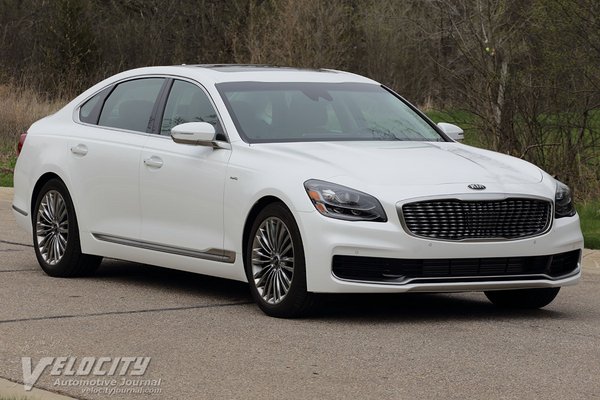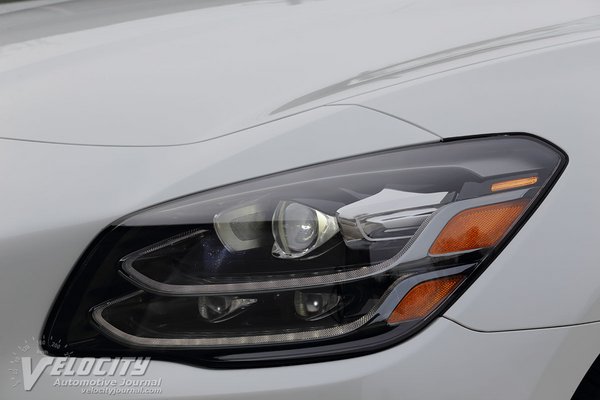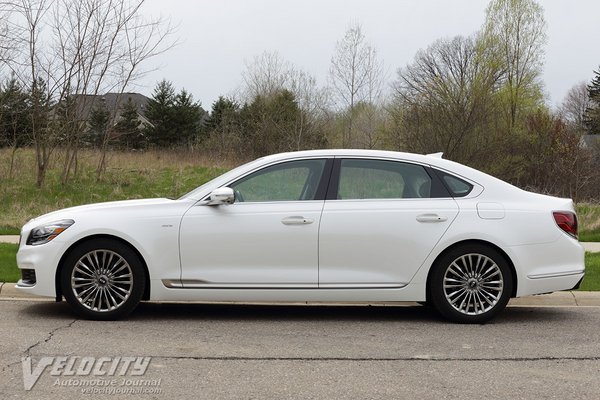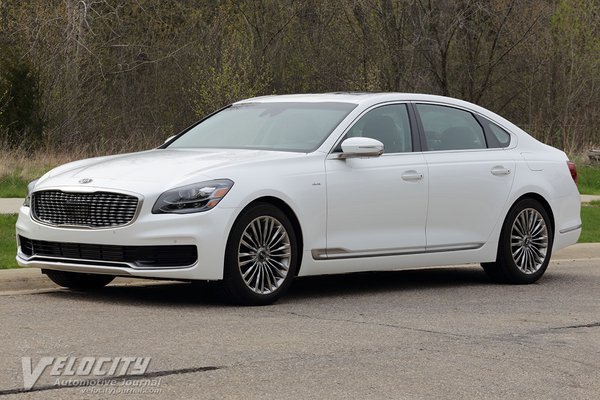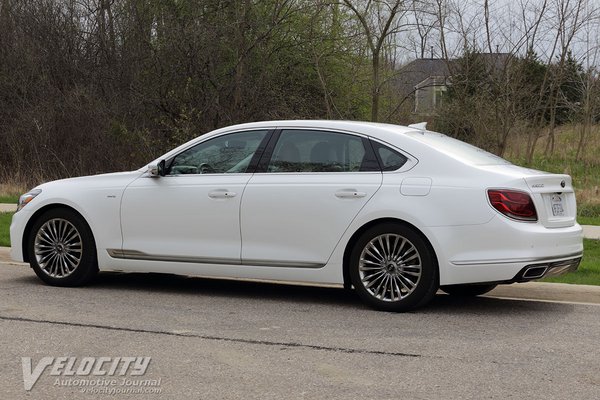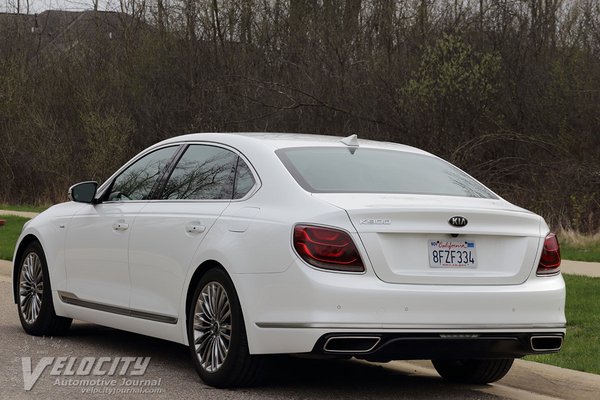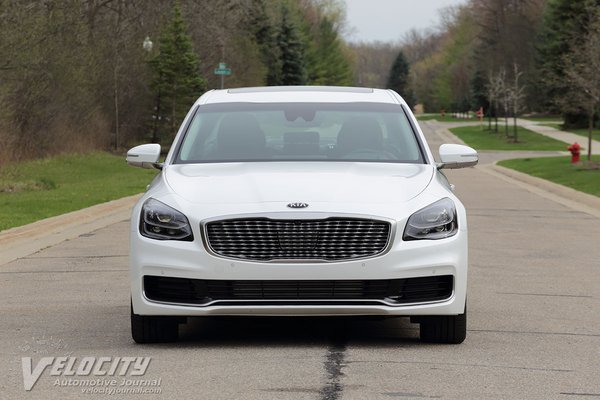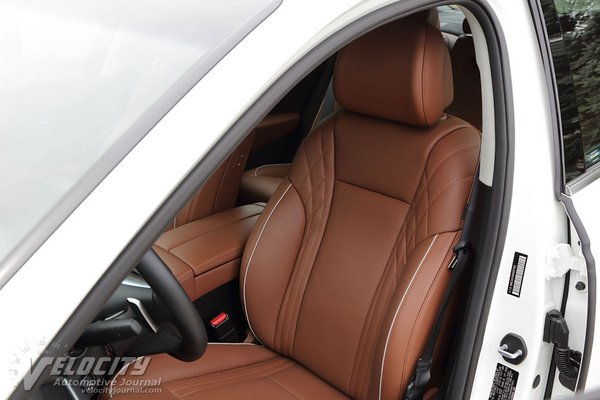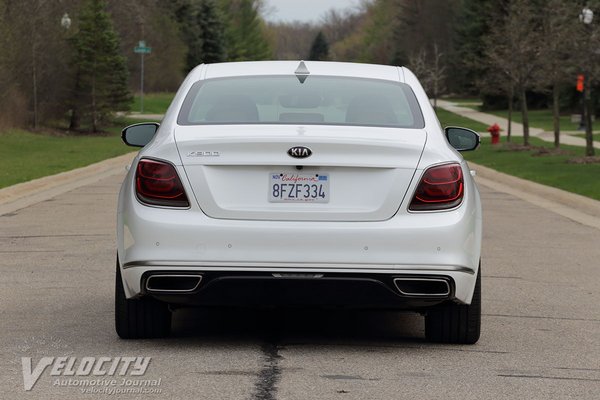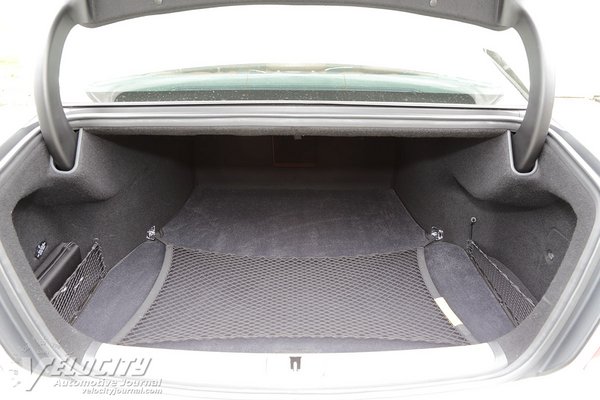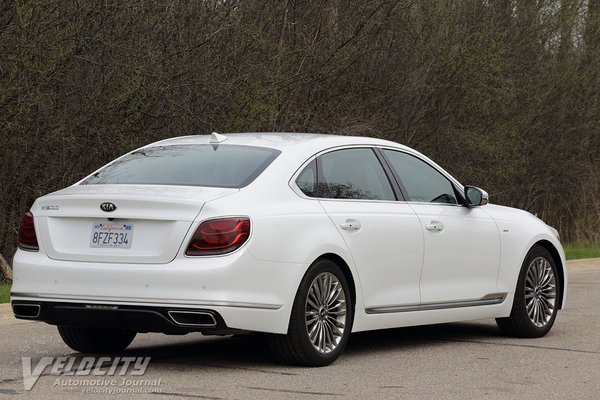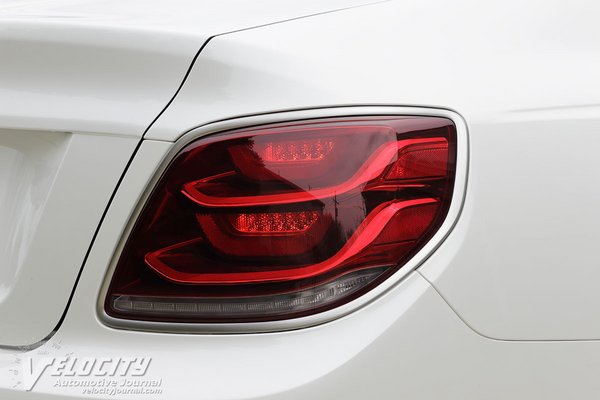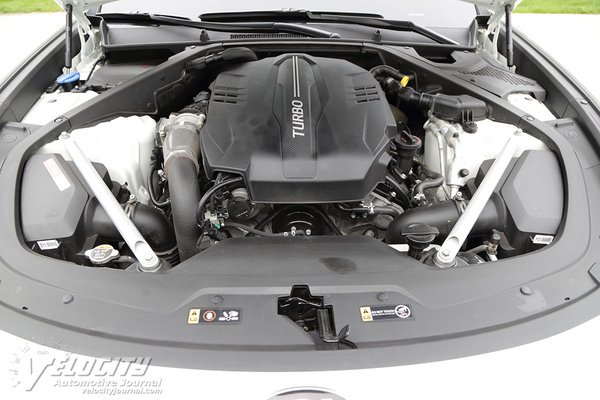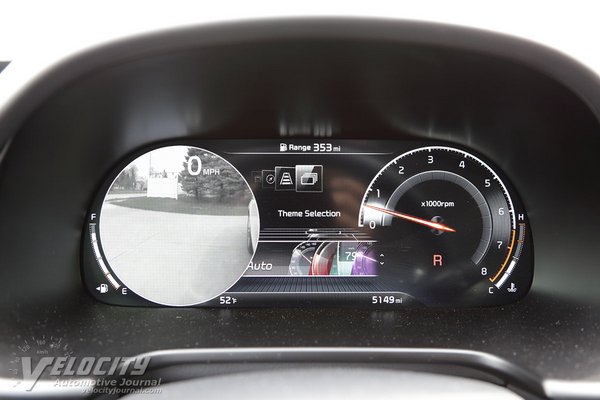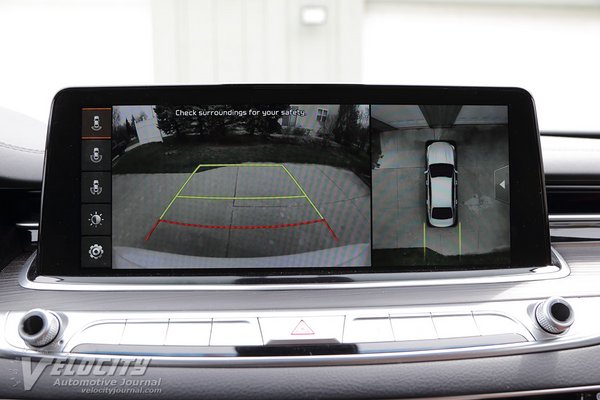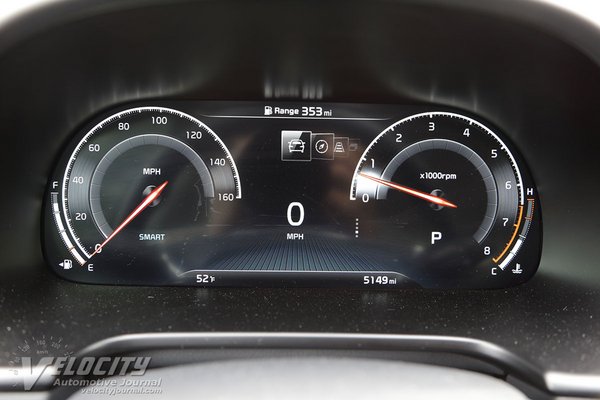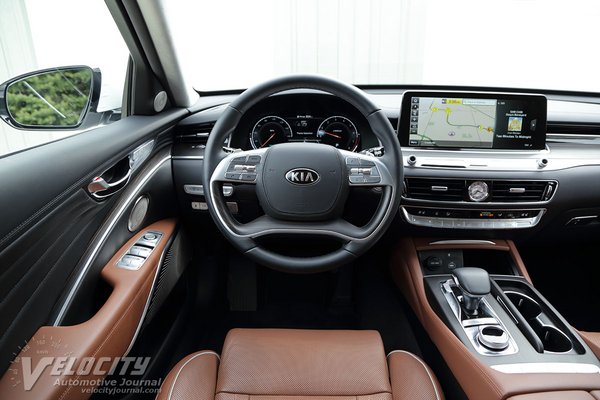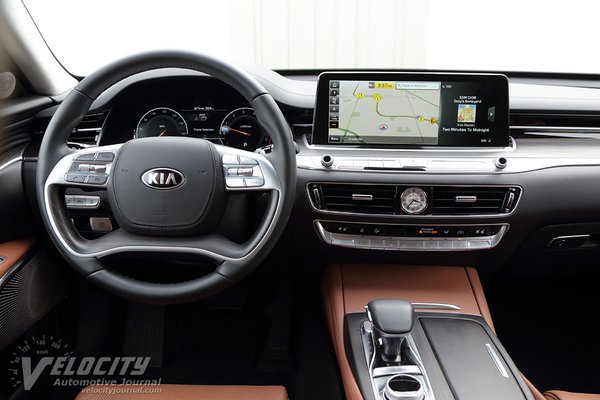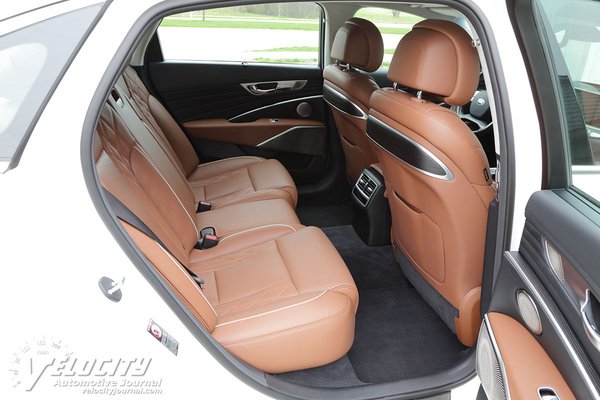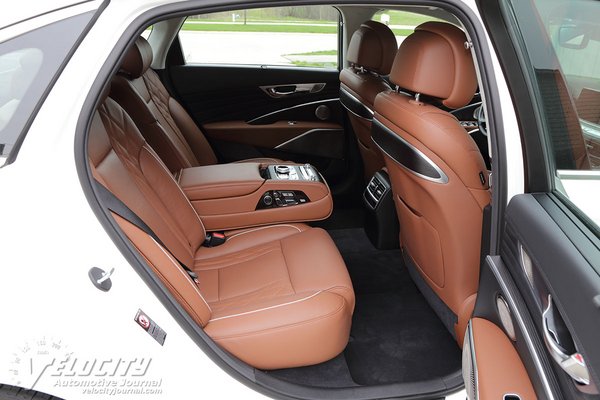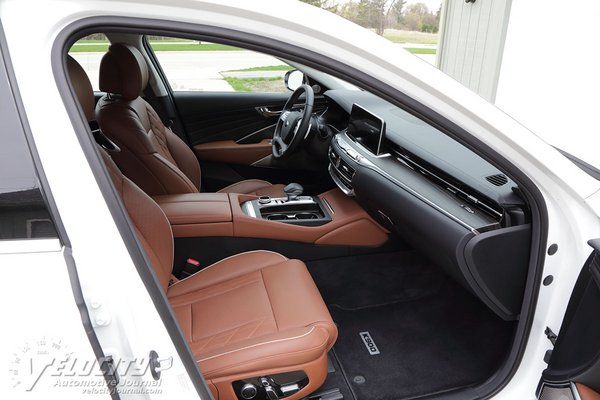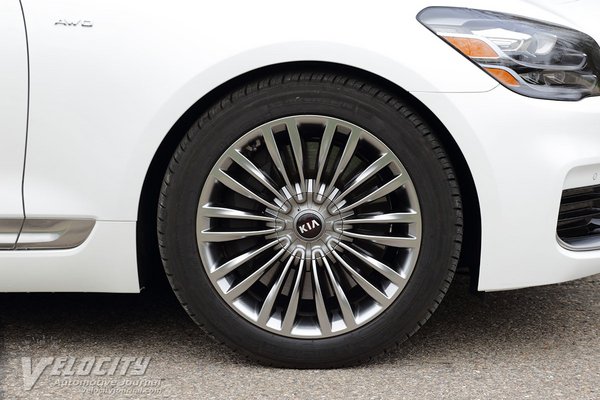2019 Kia K900
07/21/2019
Shahed Hussain
Kia is usually associated with affordable vehicles in the US, but its lineup also includes the K900 luxury sedan, positioned in the same stratum as the Mercedes-Benz E-Class, Lincoln Continental, Cadillac CTS, and its corporate sibling, the Genesis G80. Unlike other brands, which offer multiple powertrains and trim levels for each model, Kia only sells the K900 in one powertrain and minimal options.
K900 pricing starts at $59,900 with the optional VIP Package ($4,000) plus a few minor options available. Our tested vehicle sticker price included the VIP package and summed up to $63,900 plus $995 destination charge for total of $64,895. At this price point, the K900 competes with the Mercedes-Benz E450 ($59,950), Cadillac CTS AWD 3.6L ($59,690) or Lincoln Continental Reserve ($59,710).
As expected from Kia, a long list of standard equipment includes navigation, 17-speaker Lexicon audio system, Android Auto and Apple CarPlay, Nappa leather seats, heated and ventilated front and rear power seats, heated steering wheel, and LED projector headlights. Active and passive safety technologies include electronic stability control, corner brake control, blind spot collision warning, forward collision avoidance, rear cross-traffic collision avoidance, lane departure warning, lane keeping assist, and surround view monitor.
The K900 shares its powertrain with the Stinger sport sedan: a 3.3L twin-turbocharged V-6 with 365-hp @ 6,000 RPM and 376 lb.-ft @ 1,300-4,500 RPM. This all-aluminum powerplant has dual overhead-cams, variable valve-timing and direct injection. An 8-speed automatic routes power to all four wheels, with dynamic torque vectoring that shifts power from the front to rear axles. Up to 50% of torque can be sent to the front wheels. Gearing is optimized for maximum fuel efficiency: sixth (0.83:1) through eighth (0.56:1) are overdrive gears linked to a 3.538:1 final drive ratio. EPA fuel consumption ratings are 18/25 (city/hwy.).
Kia's engineers designed a MacPherson strut front suspension with a stabilizer bar. At the rear is a 5-link layout. Electronically controlled dampers are at all four wheels. Braking hardware is robust, with 14.2 in. dia. front rotors with 4-piston calipers and 13.4 in. dia. rear rotors with single-piston calipers. Michelin Primacy all-season tires: P245/45R19 (front) and P275/40R19 (rear) are mounted on 19-in. dia. alloy wheels. Steering is a variable-ratio rack-and-pinion setup with electric motor assist and 2.53 turn lock-to-lock.
Kia's interior design exudes luxury with textured wood veneers, and polished matte aluminum on the dash, door panels, and steering wheel. Virtual gauges for the speedometer and tachometer are displayed in the LCD panel within the gauge cluster. Dual paddles behind the steering wheel allow manual shifting of the 8-speed automatic transmission. A 12.3 in. tablet-style infotainment display sits atop the center stack. When reverse gear is engaged, the multiple exterior cameras show a synthesized plan view of the vehicle on the touchscreen to aid with parking. Audio and navigation controls are accessible below the touchscreen. A retro analog clock with roman numeral markings is inset between the center vents. Climate control settings are readily accessible on the center stack. Within the center console compartment are a 12V, USB, and a wireless charging pad. Dual cupholders are located on the center console, next to transmission shift lever and drive mode controller.
The supple perforated leather front seats (heated and ventilated) are multi-adjustable: 20-way power adjustment and 4-way lumbar support for the driver; the front passenger gets 16-way power adjustments and 4-way lumbar support. Front seat lateral support and overall comfort is superb. In Sport mode, the bolsters stiffen up to hold the driver in place. Front headroom is tight for passengers near 6-ft. tall. At the A-pillar, the roofline is so low that entering the front seats requires some care to avoid hitting the roof. A spacious rear compartment has its separate climate controls and powered seat controls, including recline. Rear legroom is generous, but becomes tight if the seats are reclined. Surprisingly, rear headroom is also at a premium even for occupants shorter than 6 ft.
The Kia's turbo V-6 is a smooth and refined powerplant, but suffers from turbo lag below 2,000 RPM. Once the turbos spin up, the V-6 is capable of impressive midrange thrust as it accelerates the K900 rapidly into almost triple digit speeds. Multiple preset drive settings, including a Custom mode are accessible via the rotary console-mounted knob. We preferred using the Sport mode which tightens up the suspension damping and locks out 7th and 8th gears (the highest gears can be manually selected via the steering wheel paddles). Although the drivetrain and suspension have a Sport mode, the spring and damper tuning is optimized for a compliant ride regardless of drive setting. The substantial brakes are capable of scrubbing off speed efficiently, but the soft springs contribute to significant front suspension dive under braking. Around curves, the K900 exhibits moderate body roll and understeer, reminding us that this Kia is a luxury sedan, with mild sporting pretensions. The K900 excels at highway cruising with insignificant wind, tire, and engine noise at 70-80 MPH. During our review period, sunny weather prevented us from completely evaluating the all-wheel drive system. We did not notice any wheelspin or torque steer under full throttle acceleration, indicating that the AWD is transparent in operation, at least on dry roads.
The K900 is an ambitious attempt to crack the American luxury sedan market, a difficult task for any new entrant. In Kia's tradition, the K900 includes an extensive list of standard equipment that is extra cost or unavailable from other sedans in its segment. But the real obstacle for Kia is that despite its value proposition, the K900's lofty sticker price will steer luxury sedan buyers towards more established brands for about the same money.

